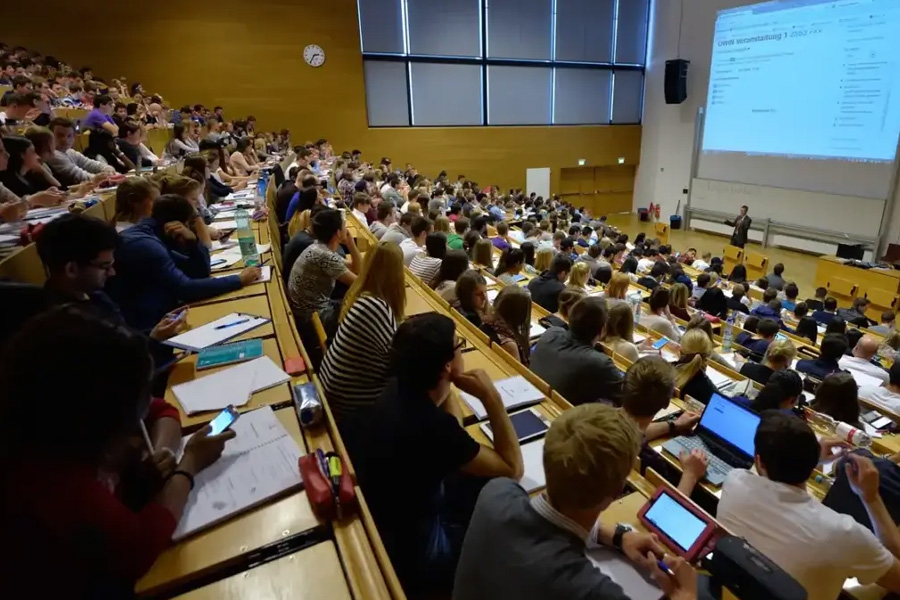Leveraging education technology solutions is essential to improving teaching effectiveness and student engagement in today’s quickly changing educational landscape. The Lecture Recording System is one such essential technology that gives teachers the capacity to effectively record, store, and disseminate course material. We’ll go over all the necessary stages in this thorough guide to successfully establish lecture recording systems in educational institutions, from grasping the fundamentals to becoming proficient in more complex methods.
Comprehending Lecture Recording Systems
Education technology solutions, including lecture recording systems, are revolutionising the way educators deliver course content and engage with students. At its core, a lecture recording system allows instructors to record their lectures, presentations, or instructional materials and make them accessible to students for review at their convenience. These systems typically consist of hardware, such as cameras and microphones, coupled with software for recording, editing, and managing multimedia content.
Benefits of Implementing Lecture Recording Systems
The integration of lecture recording systems into educational settings offers a myriad of benefits for both educators and students alike. Firstly, it provides students with flexible learning opportunities, allowing them to revisit complex concepts, review missed lectures, or study at their own pace. Moreover, lecture recordings serve as valuable study aids, particularly for visual and auditory learners who may benefit from multiple exposures to course content. For educators, lecture recording systems can streamline course delivery, reduce repetitive instruction, and free up valuable class time for interactive discussions and activities.
Key Considerations Before Implementation
Before starting the implementation process, educational institutions need to give careful thought to a few important criteria. First and foremost, it’s critical to evaluate the technology infrastructure to make sure it can meet the needs of the lecture recording system, including enough network bandwidth and storage capacity. Institutions must also create explicit policies that cover matters like copyright, privacy, and intellectual property rights when it comes to recording and sharing course materials. In order to guarantee that teachers are competent and self-assured in their use of the lecture recording system, faculty training and support are also essential.
Step-by-Step Implementation Guide
1. Conduct a Needs Assessment:
Begin by identifying the specific needs and objectives of your institution regarding lecture recording systems. Consider factors such as course formats, student demographics, and faculty preferences to tailor the implementation plan accordingly.
2. Select the Right Technology:
Choose a lecture recording system that aligns with your institution’s requirements and budget constraints. Evaluate factors such as recording quality, compatibility with existing infrastructure, and ease of use for both educators and students.
3. Establish Policies and Guidelines:
Develop comprehensive policies and guidelines governing the use of lecture recording systems, including procedures for recording, storing, and accessing course content. Ensure compliance with legal and ethical considerations, such as student privacy rights and intellectual property protection.
4. Provide Training and Support:
Offer comprehensive training programs and ongoing support for faculty, staff, and students to familiarise them with the lecture recording system and its features. Provide resources such as user manuals, tutorials, and helpdesk support to address any technical issues or questions that may arise.
5. Promote Adoption and Usage:
Actively promote the benefits of lecture recording systems to faculty and students and encourage their widespread adoption and usage. Highlight success stories, share best practices, and provide incentives to incentivise participation and engagement.
Conclusion
Implementing a lecture recording system can significantly enhance the teaching and learning experience in educational institutions. By understanding the basics, considering key factors, and following a systematic implementation approach, institutions can successfully integrate education technology solutions into their framework. With proper planning, training, and support, lecture recording systems have the potential to revolutionise tradition.

For further inquiries or assistance with implementing lecture recording systems and other education technology solutions, contact Media Architects today.


